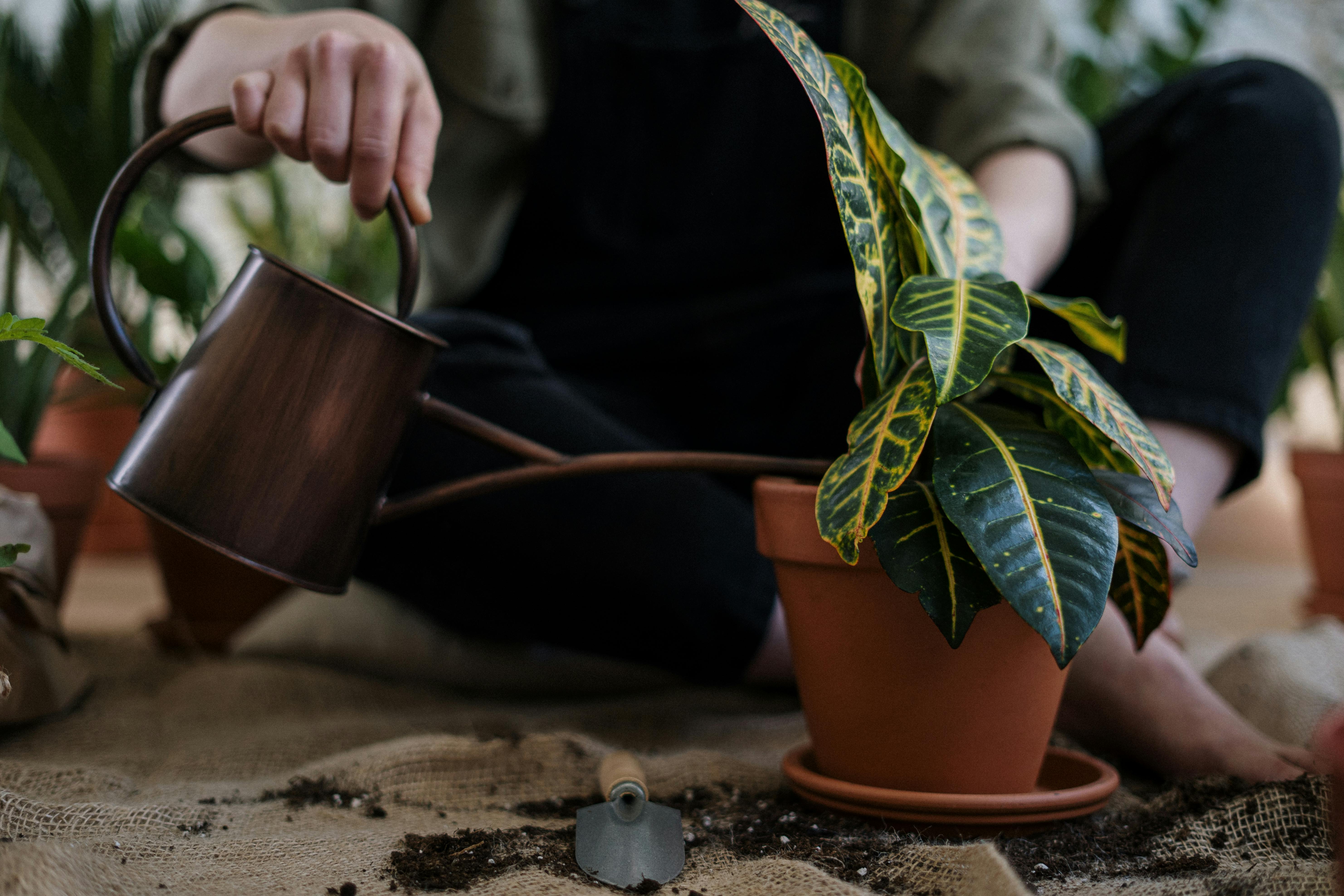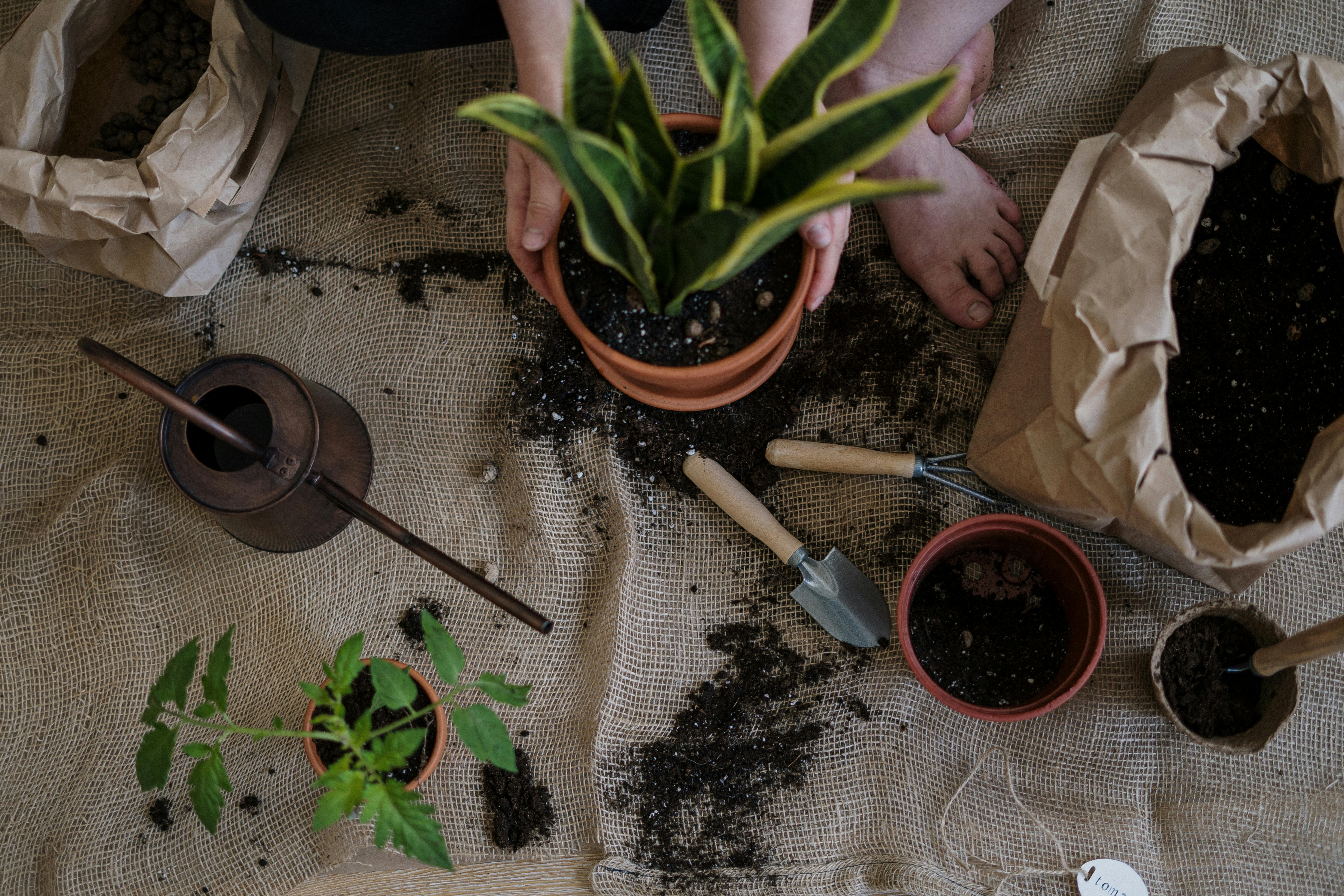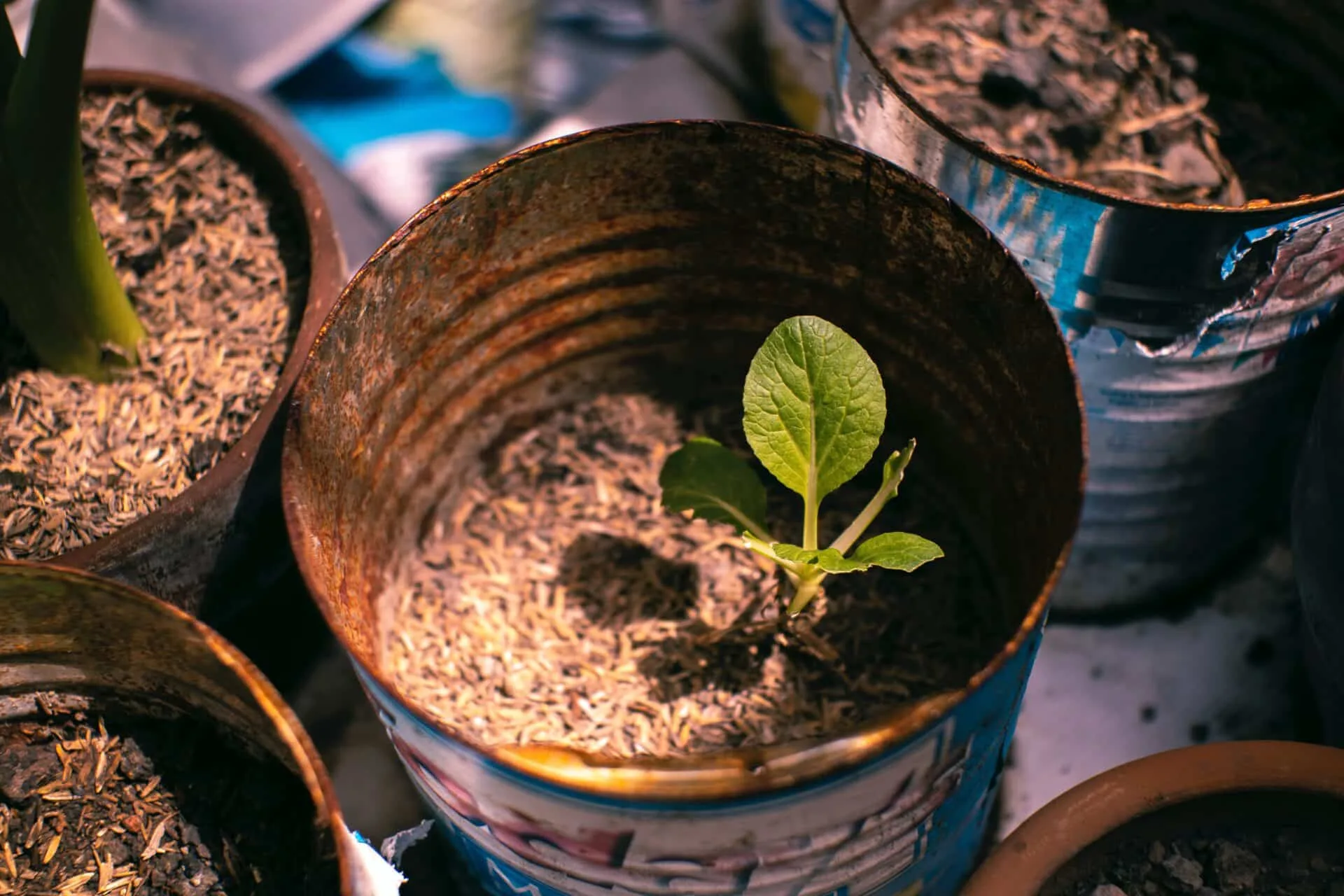Blueberries are a popular and delicious fruit, but growing them outdoors can present some challenges. Fortunately, you can also grow blueberries in a pot. This means that you can enjoy the sweet rewards of a blueberry crop even if you have limited space or don’t have access to an outdoor garden. In this article, we’ll explain how to successfully grow blueberries in a pot.Yes, you can grow blueberries in a pot. Blueberries are one of the few fruits that can be grown successfully in a container, as long as you provide the right conditions. Choose a pot that is at least 12 inches deep and fill it with potting soil with an acidic pH of around 4.5-5.0. Place the pot in an area that receives full sun for at least six hours daily and water regularly to keep the soil evenly moist but not soggy. Fertilize the blueberry plant once a month with an acidic fertilizer and provide supplemental iron if necessary.
Benefits of Growing Blueberries in Pots
Growing blueberries in pots offers several advantages over growing them directly in the ground. For one, it is much easier to control the soil pH, drainage, and nutrient levels when growing in a pot as opposed to growing directly in the ground. Additionally, the portability of pots allows for blueberries to be grown on patios, balconies or decks, making it possible to grow them even in areas with limited space. With proper care and attention, blueberries grown in pots can produce an abundant crop of delicious fruit each season.
Another advantage of growing blueberries in pots is that it reduces the risk of disease and pests. When grown directly in the ground, blueberry plants are more susceptible to diseases such as root rot and pest infestations from insects such as aphids or mites. When grown in pots, however, these threats can be minimized by controlling the environment around the plants more closely. This makes it easier to keep disease and pests at bay while still allowing for a bountiful harvest.
Finally, one of the greatest benefits of growing blueberries in pots is that they can be moved around easily during different seasons or when needed. This allows for flexibility when it comes to placement and means that you can move your plants where they will get more sunlight or shade as needed throughout the year. Additionally, if you need to trim your plants back or repot them you can do so without having to dig up the entire plant from the ground which can save time and energy.
What Type of Pot Is Best for Growing Blueberries?
When growing blueberries in containers, it’s important to choose the right pot. The type of pot you select will depend on the size and type of plant you want to grow, as well as the amount of space you have available. While there are many different types of pots available, some are better suited for growing blueberries than others.
Plastic pots are lightweight and inexpensive, making them a popular choice for home gardeners. However, they can be prone to cracking and breaking if exposed to extreme temperatures. Additionally, they often don’t provide enough drainage for blueberry plants.
Ceramic or terracotta pots are heavier and more durable than plastic pots, but also more expensive. They provide good drainage and are less likely to crack in extreme temperatures, making them a better option for blueberry plants.
Wooden pots are another popular choice for growing blueberries. They provide good insulation and can last for many years. However, they can be expensive and require regular maintenance to prevent rotting or corrosion due to moisture exposure.
Ultimately, the best type of pot for growing blueberries will depend on your individual needs and preferences. Plastic pots may be the most economical choice, but ceramic or terracotta pots will offer better drainage and insulation for your plants over time. Wooden containers may also be an option if you’re willing to invest in their maintenance costs. Whichever material you choose, make sure it is large enough to accommodate your plant’s root system and has plenty of drainage holes at the bottom so that excess water can escape easily.
What Soil Should Be Used for Growing Blueberries in Pots?
Growing blueberries in pots requires the right soil to ensure that your plants are healthy and productive. The ideal soil for growing blueberries in pots should be acidic, well-draining, and high in organic matter. A soil pH of 5.5 to 6.5 is ideal for blueberry plants, and you can adjust the pH of your soil with the addition of sulfur or peat moss.
Your potting soil should be light and airy, providing good drainage for the roots. You can mix together equal parts of peat moss, compost, and perlite or vermiculite to provide a good balance of drainage and water retention. Adding a slow-release fertilizer to your potting mix will provide your blueberry plants with essential nutrients during their growing season.
It is also important to water your blueberry plants regularly, but not too often. The soil should be moist but not waterlogged or saturated; this can cause root rot and other problems that can affect the health of your plants. Adding mulch around the base of your blueberry bush will help retain moisture in the soil, as well as suppress weed growth.
By taking the time to choose the right soil for growing blueberries in pots, you can ensure that your plants have everything they need to thrive and produce delicious fruit season after season.
How Much Sunlight Do Blueberry Plants Need in Pots?
Blueberry plants grown in pots require a minimum of 6 hours of sunlight each day for healthy growth and maximum fruit production. While they can tolerate partial shade, it is best to provide them with at least 6 hours of direct sunlight each day for optimal growth. If possible, place the pots in an area that receives full sun all day, such as a south or west-facing windowsill or balcony.
Blueberry plants also require good drainage to prevent root rot and other diseases. When planting blueberries in pots, use a potting mix specifically designed for acid-loving plants or mix your own using equal parts peat moss, perlite, and vermiculite. Make sure the pot is large enough to accommodate the roots and has adequate drainage holes at the bottom.
It’s also important to water blueberry plants regularly. During hot weather, they may need to be watered every day. Check the soil moisture every few days and water when the top layer of soil feels dry to the touch. When watering, make sure to use lukewarm water and avoid over-watering as this can lead to root rot.
Finally, be sure to fertilize your blueberry plants regularly with a fertilizer formulated for acid-loving plants such as azaleas or rhododendrons. Feed your blueberries every two weeks during the growing season (spring through summer) and once a month during winter when growth slows down.
By providing your blueberry plants with plenty of sunlight, well-draining soil, regular watering and regular fertilizing you can ensure that they will grow healthy and produce plenty of delicious berries!

How Much Water Is Needed to Grow Blueberries in a Pot?
Growing blueberries in a pot requires the right amount of water. Too little water can cause the plants to dry out and too much water can cause root rot. Blueberries require about an inch of water per week, but this amount may vary based on the size and type of pot used, as well as the climate and temperature. When taking into account these factors, it is important to adjust your watering schedule accordingly.
Watering blueberry plants should be done slowly and deeply so that it reaches the roots. This will also help prevent runoff, which can wash away nutrients from the soil. Additionally, avoid overwatering by checking the soil moisture before each watering session; if it still feels damp or moist, wait a few days before watering again.
When growing blueberries in containers, it is important to use a potting mix that has good drainage qualities; this will help reduce the risk of root rot due to excess moisture. Make sure that there are plenty of holes at the bottom of your container for proper drainage and consider adding an additional layer of gravel at the bottom for even better drainage.
It is also important to check your plants regularly for signs of dehydration or disease. Dehydration can be identified by wilted leaves or branches, while disease may manifest as discolored leaves or spots on them. If you notice any signs of dehydration or disease, adjust your watering routine accordingly and consider increasing or decreasing your frequency depending on what is needed for optimal plant health.
Overall, blueberry plants require about an inch of water per week but this may vary depending on climate and temperature conditions as well as pot size and type used. Water slowly and deeply, use a potting mix with good drainage qualities and check regularly for signs of dehydration or disease so you can adjust your watering routine accordingly.
How Often Should You Fertilize Blueberry Plants in Pots?
Fertilizing blueberry plants in pots is an important part of keeping them healthy and productive. Blueberries require specific nutrients to grow and produce well, and fertilizer helps ensure they get the nutrition they need. Depending on the type of fertilizer you use, blueberry plants in pots should be fertilized every two to four weeks during the growing season.
It is important to choose a fertilizer specifically formulated for blueberries. These fertilizers provide all the necessary nutrients for healthy growth and production. In general, these fertilizers contain a combination of nitrogen, phosphorous, and potassium as well as trace elements like iron and zinc.
When applying fertilizer to blueberry plants in pots, it is important to follow the instructions on the package carefully. Overfertilizing can cause serious damage or even kill the plant, so be sure not to exceed the recommended amount. Start off with a smaller amount at first and gradually increase it until you reach the recommended amount.
Blueberry plants in pots should also be monitored for signs of nutrient deficiency throughout the growing season. If yellowing leaves or stunted growth are observed, it may indicate that more fertilizer is needed or that additional nutrients are required for optimal growth and production. It is also important to avoid over-watering as this can wash away essential nutrients from the soil.
In conclusion, blueberry plants in pots should be fertilized every two to four weeks during their growing season with a specialized fertilizer designed for blueberries. Be sure not to overfertilize and monitor your plants for signs of nutrient deficiency throughout the season.
Pruning Blueberries in a Pot
Pruning blueberries in a pot is an important part of growing healthy and productive plants. Pruning helps keep the plant well-shaped, encourages new growth, and stimulates fruiting. Pruning should occur in late winter or early spring before new growth begins. In general, pruning involves removing old, dead, or broken branches, as well as any branches that are overcrowded or growing too densely. It is also important to remove branches that are crossing over each other, as these can lead to fungal diseases. Additionally, pruning away any flowers or fruit before they ripen will help ensure the energy of the plant goes towards producing larger and sweeter berries later on in the season.
When pruning blueberries in a pot it is important to remember that these plants do not require heavy pruning like many other fruit trees. Rather than drastically cutting away large portions of the bush at one time, it is best to slowly trim away small amounts over several years while always leaving enough foliage for the plant to continue growing and producing fruit. Additionally, when pruning be sure to use sharp shears and clean them with rubbing alcohol between cuts to prevent spreading any diseases.
Overall, proper pruning is an essential part of maintaining healthy blueberry plants in pots. By removing old or broken branches and thinning out overcrowded areas of growth you can help ensure your blueberry plants stay healthy and productive for years to come!

Conclusion
Yes, you can definitely grow blueberries in a pot. Growing blueberries in containers or pots is a great way to get the benefits of fresh, juicy, antioxidant-rich fruit, no matter how much space you have available. The key to success is providing your blueberry plants with proper soil preparation and nutrition, adequate sunlight and water, and well-drained soil. With a little bit of effort and care, you can easily grow healthy blueberry plants in pots that will provide you with an abundance of delicious fruit for many years to come.
Blueberries are one of the few truly healthy fruits available today. They are low in calories, high in fiber and packed with antioxidants and vitamins. Growing them at home is an easy way to ensure that you always have access to this nutritious snack. Whether you choose to grow blueberries in the ground or in containers, they will provide you with delicious berries that are sure to brighten up any meal or snack time.



